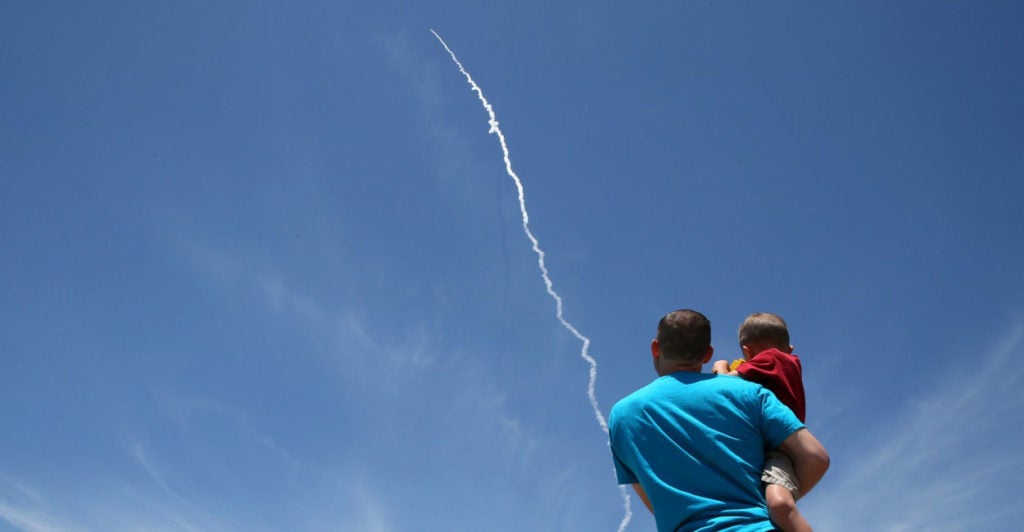North Korean threats to strike the U.S. have hit a new obstacle.
On Tuesday, the U.S. Missile Defense Agency conducted a successful test of the ground-based midcourse defense system.
The test presents a seminal point in the development of the system because for the first time ever, it managed to shoot down an intercontinental-range ballistic missile target—a feat many had thought impossible.
Intercepting such a target at thousands of miles an hour is true rocket science and an impressive achievement of American technological ingenuity.
The successful test is a validation of critical work that has been done on the system since its inception after the United States withdrew from the Anti-Ballistic Missile Defense Treaty in 2002.
The test comes at an important time as North Korea threatens to use its ballistic missiles to strike the U.S. homeland.
And while it is not the only adversary with long-range ballistic missiles, due to the unpredictability and forceful rhetoric emanating from its leader, the threat from Pyongyang is indeed the most imminent.
North Korea is believed to have the capacity to strike Hawaii and parts of Alaska and California, and it is continuing to advance the range, quality, and total number of its ballistic missiles.
North Korea is also reportedly working on miniaturizing its nuclear weapons to fit its ballistic missiles. Both programs represent gross violations of international agreements, but they make sense from the North Korean perspective.
A cash-strapped regime would be unlikely to bear the costs of ballistic missile and nuclear weapon sanctions unless it intended to pair one with the other to threaten the United States.
The United States’ ground-based midcourse defense system is the only mechanism the United States has to protect its homeland from these missiles.
Much more remains to be done in advancing missile defense technology. U.S. adversaries continue to improve their ballistic missiles, both in quality and in quantity.
The United States must be able to protect both itself and its allies from ballistic missile threats of all ranges and capabilities.
First, the U.S. ought to continue to develop a comprehensive layered ballistic missile defense system, including interceptors in space. Second, it should improve its sensor network to maximize the capability of the current interceptors.
And lastly, it must continue to invest in advanced ballistic missile defense concepts and technologies, like directed energy, to ensure it is able to keep up with the ballistic missile threat.
